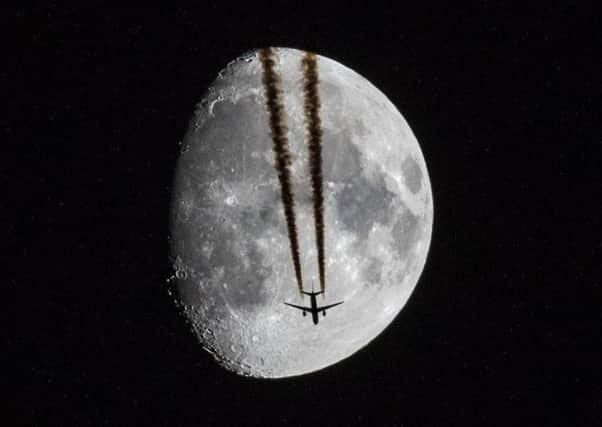'˜Supermoon' phenomenon brightens up Scottish skies


The Moon will appear around 7% bigger and 15% brighter than usual.
Known as the Lunar Perigee, the phenomenon happens when the Moon is closest to Earth during its monthly orbit.
Advertisement
Hide AdAdvertisement
Hide AdTonight the Moon will be situated 222,761 miles from the Earth, around 16,000 miles closer than normal.
Avid skywatchers are advised to head to rural locations where there is less light pollution in order to maximise their enjoyment of the event.
Remote areas in Highland areas such as Sutherland are said to offer some of the clearest skies in Western Europe - of course, this is highly-dependent on cloud cover.
In Dalbeattie, Dumfries and Galloway, photographer Drew Geddes, was out walking his dog when he saw aeroplanes flying close to the Moon.
Drew rushed home and managed to catch the distinctive outline of the wing and body of the plane and the vapour trail as the plane passed by the Moon.
This month’s occurrence is the first since 14 November last year, when the Moon was at its closest since 1948. The Moon will not be that close again until 25 November 2034.
Supermoons appear at their biggest in the Northern Hemisphere during the winter months, when the Earth is closer to the Sun.
Our star’s gravitational pull yanks the Moon closer to the Earth, making it appear larger and brighter in our skies.
Advertisement
Hide AdAdvertisement
Hide AdWeather permitting, Scottish skywatchers will be able to enjoy the supermoon at its fullest just after moonrise, when the Moon is just above the horizon.
When the Moon is lower in the sky and close to buildings and natural landmarks, it appears larger to the eye, a piece of optical trickery known as ‘Moon Illusion’.
The term ‘supermoon’ was coined in 1979 by the American astrologer Richard Nolle.
